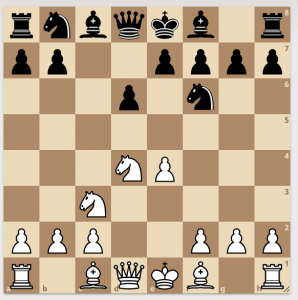
By NM Evan Rabin, CEO of Premier Chess

3 Questions to Always Ask when Your Opponent Makes a Move
Would you ever cross the street with out looking both ways? Would you ever make a business decision without considering what your competitors are doing? The answer to both questions is likely “no”, or at least it should be. Therefore, one should never make a chess move without considering why his opponent made his last move. In order to start one’s thought process, he should always ask three golden questions about his opponent’s previous move:
1) Why did my opponent make his move?
Firstly, a player should ask himself why his opponent made his previous move on a high level. Every single move a strong player makes has a distinct purpose. These are few examples of why:
-Threatens a piece
-Develops a piece.
-Helps develop another piece.
-Responds to a threat
Contrarily to popular belief, most moves a strong player makes is not to make a threat.
2) If my opponent had another move, what would it be?
Often beginners will blindly continue with their plan without even realizing what his opponent played and what they are planning next. This gaffe will cause blunders as they will not see simple threats. If Player A attacks Player B’s bishop, it is very clear if Player A had another move, he would take the bishop. Therefore, in order for a move to be a candidate move, Player B needs it to stop Player A from taking his bishop.
3) What changed about the position?
I learned to always ask this question from our 75th podcast guest Grandmaster Alex Lenderman. While the first two questions are important to ask and address, one will rarely win a chess game, just by responding to all of his opponent’s ideas. When I once told a student that he needed to always consider why his opponent made his move, he told me that it is not good to be a reactionary. It is important to look at the nuances of a move and see how you can take advantage of the changes.

For instance, in this position, black can initiate the Sveshnikov Sicillan by playing 5…e5…. What changed about the position?
A lot of beginners and intermediate players will play 6. Nb3 or Nf3, the so-called retreat squares. One who is a little more experienced will noticed that after 5…e5, there was a change in the position. Black created a backward d-pawn on d6. Therefore, it makes most sense for white to play 6. Ndb5, putting pressure on the weakness.
Moving forward, every time your opponent makes a move, don’t have the urge to immediately start thinking of your plan. Always ask your self “Why did my opponent make his move?”, “If my opponent had another move what would it be?” and “What changed about the position?”. Then you can start looking for candidate moves and eventually come up with the best move. For more about thought process, see this blog post.


The gateway to endless gaming possibilities.
Elevate your gaming experience with our state-of-the-art online casino platform – where excitement knows no bounds!
Play anytime, anywhere with our mobile casino app!
Explore, fight, and win in our expansive online world!
Elevate your gaming experience with our state-of-the-art online casino platform – where excitement knows no bounds!
Uncover hidden treasures and secrets in our virtual worlds.
This high level of service aligns with the platform’s overall dedication to quality and reliability, ensuring that even after purchase, customers can access help and insights whenever they need it, whether it’s for clarifying installation questions or receiving guidance on choosing complementary products for future projects. This approach to service transforms a simple online hardware store into a trusted partner for projects of all sizes, building long-term relationships rooted in trust, reliability, and shared design goals.
Interesting points! I always try to anticipate my opponent’s plan, like analyzing traffic before crossing. Just as in chess, in business (or even playing Drift Boss!), understanding your competitor’s motives is key to success. Asking “Why did they do that?” is crucial before making your next move. What other questions do you find helpful?
“3 Questions to Always Ask when Your Opponent Makes a Move” remind us to think smart before reacting, just like in TM SIM Registration, where you confirm details before finalizing. Always ask: *What’s the purpose? What’s the impact? What’s my best response?* Applying this mindset ensures smooth decisions both in games and SIM registration.
The quality and precision they bring to every task reflect their strong reputation and client-focused approach.구글찌라시 I highly recommend this expert team for their reliable solutions and outstanding customer support throughout the entire process.
Great advice on always asking why your opponent made a move — it really helps improve your chess thinking and avoid simple blunders by looking deeper into strategy! For more fun gaming insights and tips (especially if you enjoy thinking ahead like in chess), check out [Link deleted]it has some cool stuff that’ll keep your strategic skills sharp too.